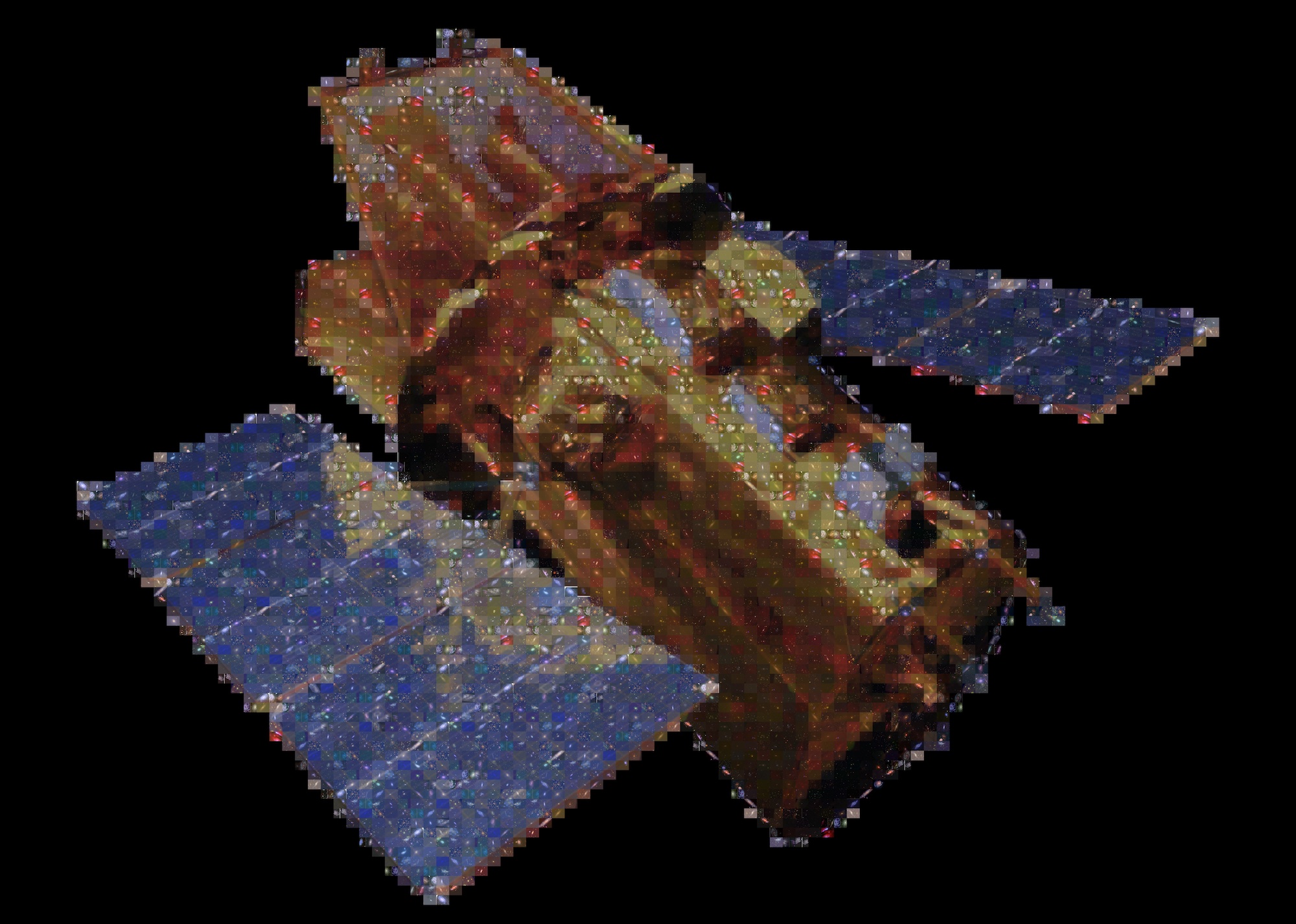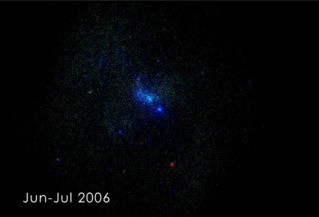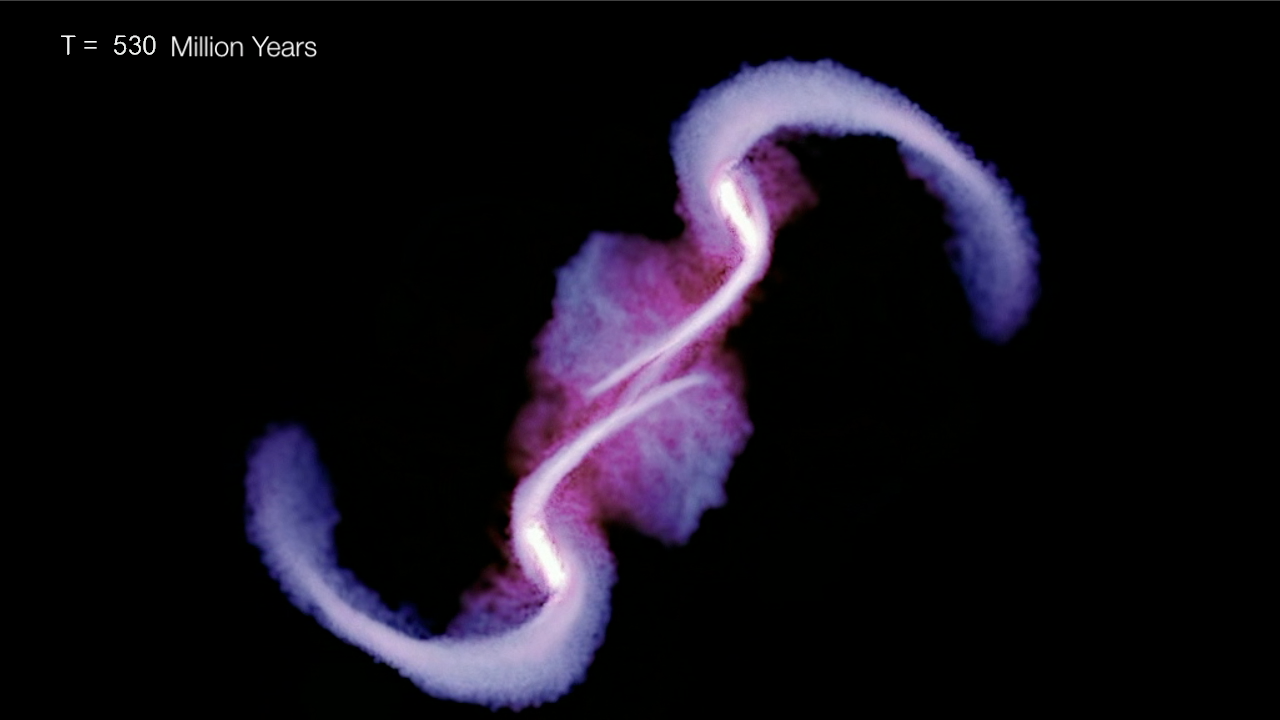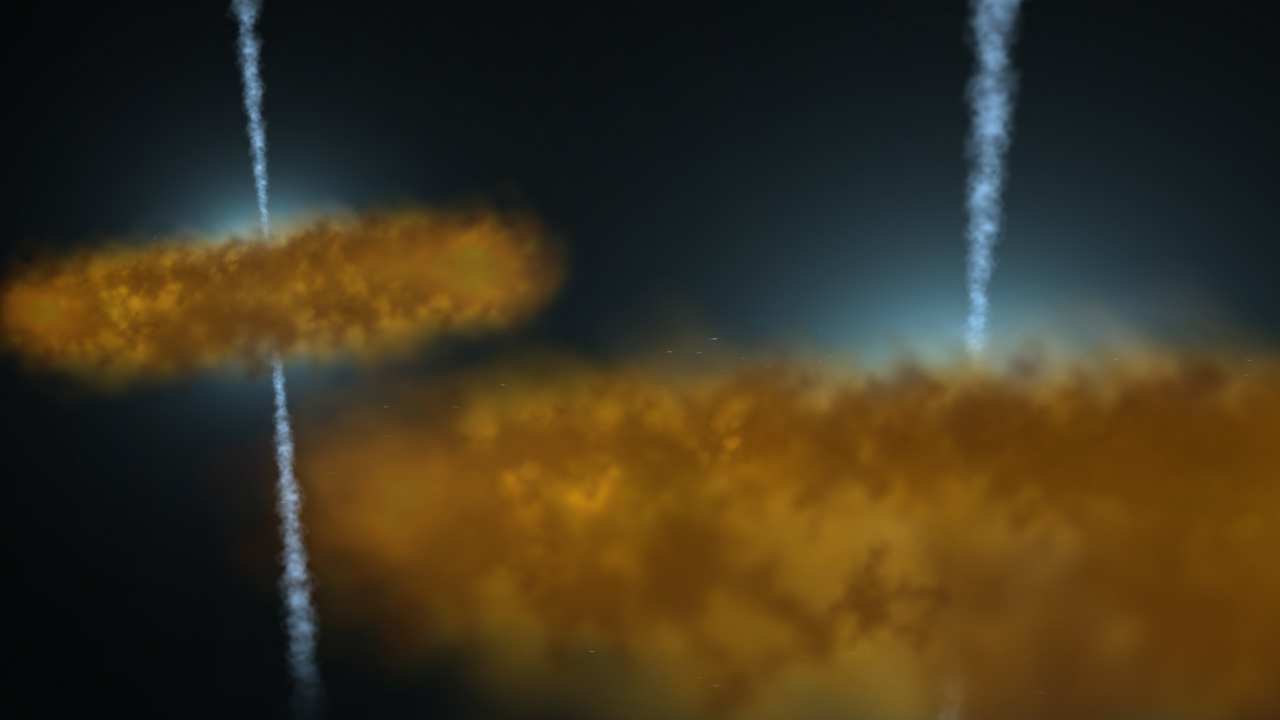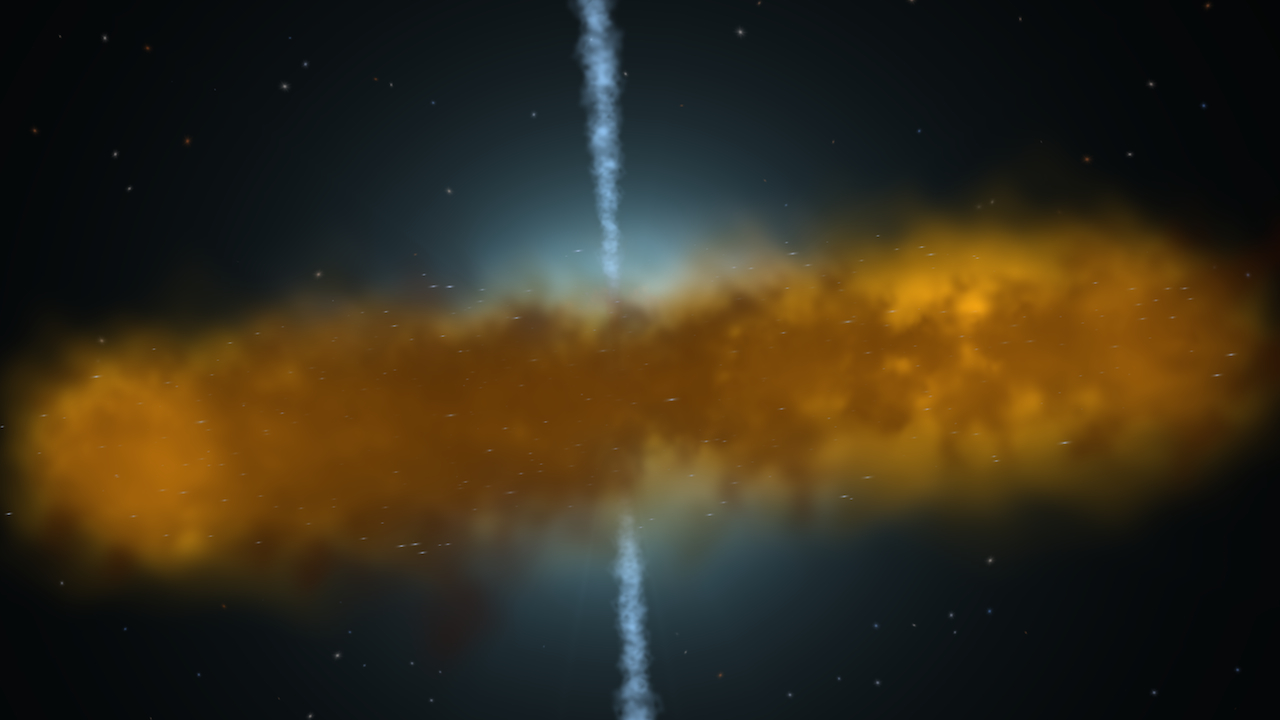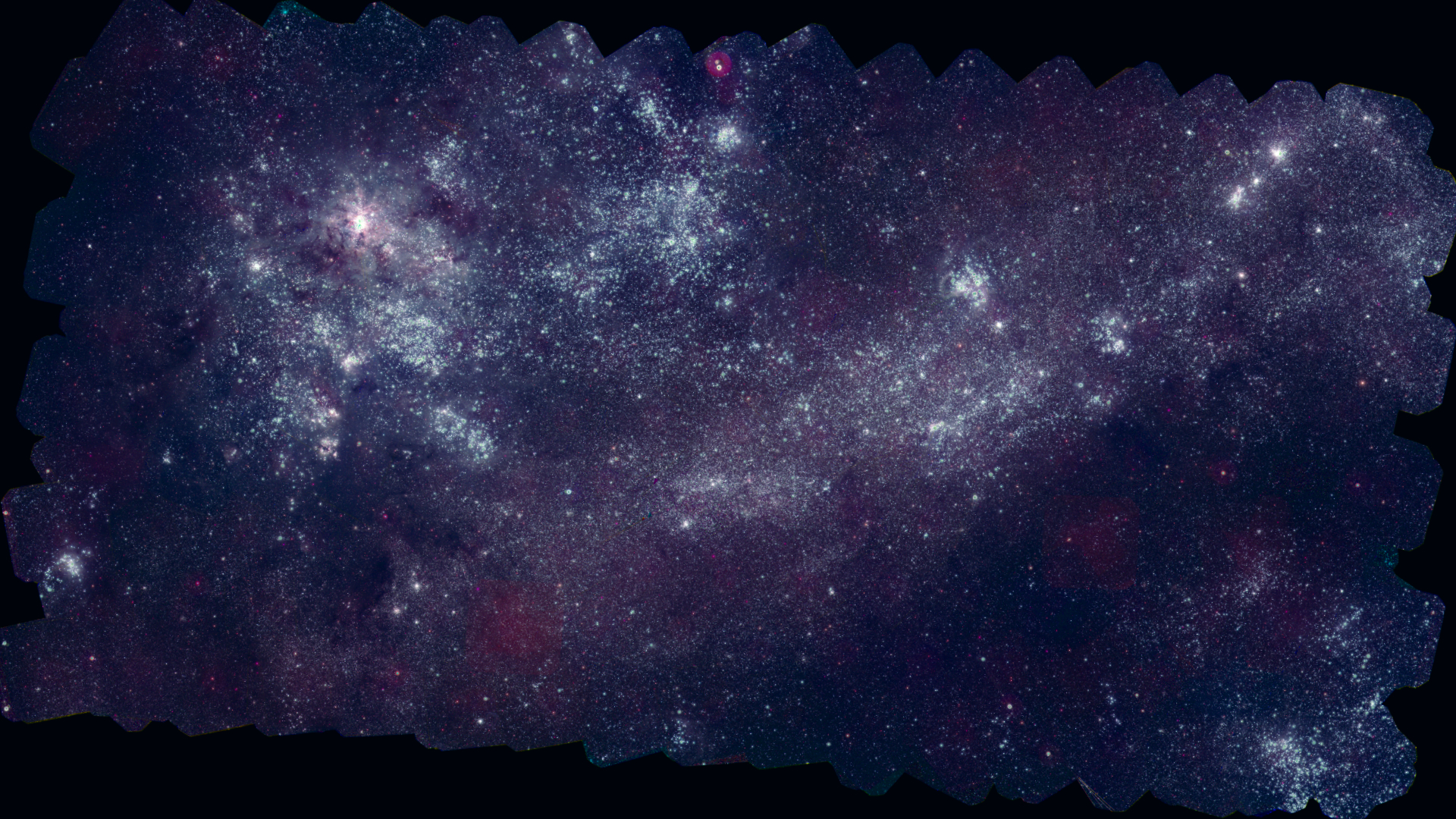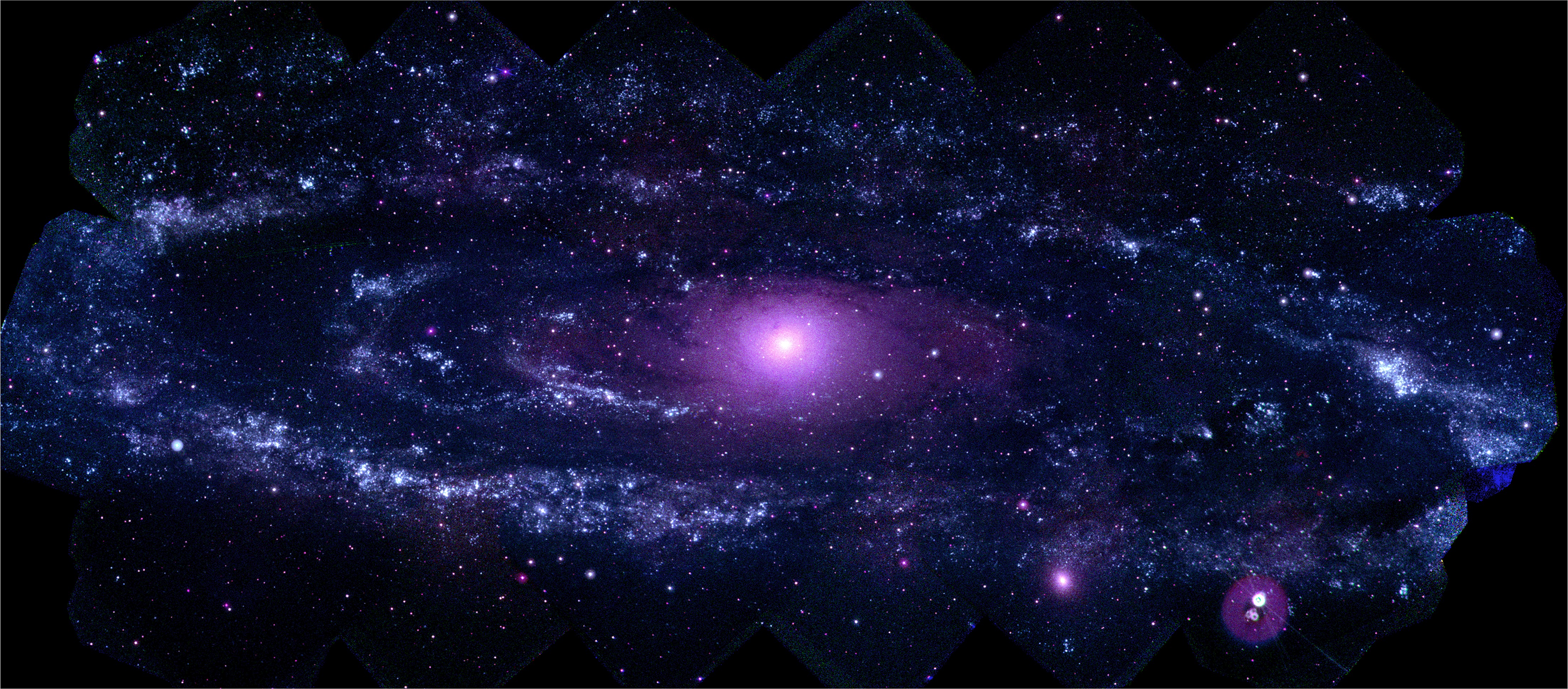Swift: Galaxies
Visuals
Magnetic Flip Drives Flare-Up of Monster Black Hole
Go to this pageExplore the unusual eruption of 1ES 1927+654, a galaxy located 236 million light-years away in the constellation Draco. A sudden reversal of the magnetic field around its million-solar-mass black hole may have triggered the outburst.Credit: NASA’s Goddard Space Flight Center Music: "Water Dance" and "Alternate Worlds" from Universal Production MusicWatch this video on the NASA Goddard YouTube channel.Complete transcript available. || ChangingLookAGN_Still1.jpg (1920x1080) [822.9 KB] || ChangingLookAGN_Still1_searchweb.png (320x180) [79.5 KB] || ChangingLookAGN_Still1_thm.png (80x40) [6.2 KB] || 14148_ChangingLook_AGN_1080.webm (1920x1080) [24.8 MB] || 14148_ChangingLook_AGN_Sub100MB.mp4 (1920x1080) [91.5 MB] || 14148_ChangingLook_AGN_1080.mp4 (1920x1080) [246.5 MB] || 14148_ChangingLook_AGN_Best_1080.mp4 (1920x1080) [534.7 MB] || 14148_ChangingLook_AGN_SRT_Captions.en_US.srt [4.2 KB] || 14148_ChangingLook_AGN_SRT_Captions.en_US.vtt [4.3 KB] || 14148_ChangingLook_AGN_ProRes_1920x1080_2997.mov (1920x1080) [3.2 GB] ||
Swift Millionth Image Mosaic
Go to this pageThis mosaic of the Neil Gehrels Swift Observatory is created from images of astronomical objects captured by the satellite’s Ultraviolet/Optical Telescope which recently captured its millionth image. Each tile is 52 x 39 pixels, and at maximum resolution, the entire mosaic is 5,252 x 3,744 pixels. Zoom in to see each tile more clearly. Credit: NASA/Swift and AndreaMosaic || Swift_Millionth_Image_Mosaic_2k.jpg (2000x1426) [593.8 KB] || Swift_Millionth_Image_Mosaic_2k_print.jpg (1024x730) [148.9 KB] || Swift_Millionth_Image_Mosaic.jpg (5252x3744) [3.2 MB] || Swift_Millionth_Image_Mosaic_2k_searchweb.png (320x180) [65.4 KB] || Swift_Millionth_Image_Mosaic_2k_thm.png (80x40) [5.1 KB] ||
Swift Catches X-ray Activity at the Galaxy's Center
Go to this pageA seven-year campaign to monitor the center of our galaxy with NASA's Swift spacecraft has provided astronomers with a unique bounty, more than doubling the number of bright X-ray flares observed from our galaxy's central black hole and leading to the discovery of a rare type of neutron star.The innermost region of our galaxy lies 26,000 light-years away in the direction of the constellation Sagittarius. At the center of it all lurks Sgr A (pronounced "saj a-star"), a behemoth black hole containing 4 million times the sun's mass.Sgr A regularly produces bright X-ray flares today, but astronomers know it was much more active in the past. To better understand its long-term behavior, the Swift team began regular observations of the galactic center in February 2006. Every few days, the spacecraft turns toward the inmost galaxy and takes a 17-minute-long "snapshot" with its X-Ray Telescope (XRT). Swift's XRT has now detected six bright flares, during which the black hole's X-ray emission brightened by up to 150 times for a couple of hours. These new detections, in addition to four found by other spacecraft, enabled astronomers to estimate that similar flares occur every five to 10 days. The Swift XRT team is on the lookout for the first sign that a small cold gas cloud named G2, which is swinging near Sgr A, has begun emitting X-rays. This is expected to start sometime in spring 2014. The event will unfold for years and may fuel strong activity from the monster black hole. The monitoring campaign has already yielded one important discovery: SGR J1745-29, an object called a magnetar. This subclass of neutron star has a magnetic field thousands of times stronger than normal; so far, only 26 magnetars are known. A magnetar orbiting Sgr A may allow scientists to explore important properties of the black hole and test predictions of Einstein’s theory of general relativity. ||
Swift Survey Finds 'Smoking Gun' of Black Hole Activation
Go to this pageAstronomers using X-ray data from an ongoing survey by NASA's Swift satellite have solved a decades-long mystery. Why, when most galaxies host giant black holes in their centers, do only about one percent of them emit vast amounts of energy? The new findings confirm that the black holes "light up" when galaxies collide — and may offer insight into the future behavior of the black hole in our own galaxy. The intense emission from galaxy centers, or nuclei, arises near a supermassive black hole containing between a million and a billion times the sun's mass. Giving off as much as 10 billion times the sun's energy, some of these active galactic nuclei (AGN) — a class that includes quasars and blazars — are the most luminous objects in the universe. ||
Nearby Galaxy Boasts Two Monster Black Holes, Both Active
Go to this pageA study using NASA's Swift satellite and the Chandra X-ray Observatory has found a second supersized black hole at the heart of an unusual nearby galaxy already known to be sporting one. The galaxy, which is known as Markarian 739 or NGC 3758, lies 425 million light-years away toward the constellation Leo. Only about 11,000 light-years separate the two cores, each of which contains a black hole gorging on infalling gas. Astronomers refer to galaxy centers exhibiting such intense emission as active galactic nuclei (AGN). Yet as common as monster black holes are, only about one percent of them are currently powerful AGN. Binary AGN are rarer still: Markarian 739 is only the second identified within half a billion light-years.Many scientists think that disruptive events like galaxy collisions trigger AGN to switch on by sending large amounts of gas toward the black hole. As the gas spirals inward, it becomes extremely hot and radiates huge amounts of energy. ||
NASA's Swift Finds 'Missing' Active Galaxies
Go to this pageMost large galaxies contain a giant central black hole. In an active galaxy, matter falling toward the supermassive black hole powers high-energy emissions so intense that two classes of active galaxies, quasars and blazars, rank as the most luminous objects in the universe. Thick clouds of dust and gas near the central black hole screens out ultraviolet, optical and low-energy (or soft) X-ray light. Although there are many different types of active galaxy, astronomers explain the different observed properties based on how the galaxy angles into our line of sight. We view the brightest ones nearly face on, but as the angle increases, the surrounding ring of gas and dust absorbs increasing amounts of the black hole's emissions. ||
NASA Swift Provides the Best-Ever UV View of the Nearest Galaxies
Go to this pageAstronomers at NASA's Goddard Space Flight Center in Greenbelt, Md., and the Pennsylvania State University in University Park, Pa., have used NASA's Swift satellite to create the most detailed surveys of the Large and Small Magellanic Clouds, the two closest major galaxies, in ultraviolet light.Thousands of images were assembled into seamless portraits of the main body of each galaxy to produce the highest-resolution surveys of the Magellanic Clouds at ultraviolet wavelengths. The project was proposed by Stefan Immler, an astronomer at Goddard.The Large and Small Magellanic Clouds, or LMC and SMC for short, lie about 163,000 and 200,000 light-years away, respectively, and orbit each other as well as our own Milky Way galaxy. Compared to the Milky Way, the LMC has about one-tenth its physical size and only 1 percent of its mass. The SMC is only half the size of the LMC and contains about two-thirds of its mass. The new images reveal about a million ultraviolet sources within the LMC and about 250,000 in the SMC. Viewing in the ultraviolet allows astronomers to suppress the light of normal stars like the sun, which are not very bright at these higher energies, and provide a clearer picture of the hottest stars and star-formation regions. Only Swift's Ultraviolet/Optical Telescope, or UVOT, is capable of producing such high-resolution wide-field multi-color surveys in the ultraviolet. The LMC and SMC images range from 1,600 to 3,300 angstroms, UV wavelengths largely blocked by Earth's atmosphere. The Large and Small Magellanic Clouds are readily visible from the Southern Hemisphere as faint, glowing patches in the night sky. The galaxies are named after Ferdinand Magellan, the Portuguese explorer who in 1519 led an expedition to sail around the world. He and his crew were among the first Europeans to sight the objects.Watch this video on YouTube. ||
Swift's UV portrait of the Andromeda Galaxy
Go to this pageNASA's Swift satellite has acquired the highest-resolution view of the neighboring spiral galaxy M31. Also known as the Andromeda Galaxy, M31 is the largest and closest such galaxy to our own. It's more than 220,000 light-years across and lies 2.5 million light-years away in the constellation Andromeda. Between May 25 and July 26, 2008, Swift's Ultraviolet/Optical Telescope (UVOT) acquired 330 images of M31 at wavelengths of 192.8, 224.6, and 260 nanometers. The images represent a total exposure time of 24 hours. Some 20,000 ultraviolet sources are visible in the image, including M32, a small galaxy in orbit around M31. Dense clusters of hot, young, blue stars sparkle in the disk beyond the galaxy's smooth, redder central bulge. Star clusters are especially plentiful along a ring about 150,000 light-years across. ||
NASA's Swift Images SN 2014J in M82
Go to this pageAn exceptionally close stellar explosion discovered on Jan. 21 has become the focus of observatories around and above the globe, including several NASA spacecraft. The blast, designated SN 2014J, occurred in the galaxy M82 and lies only about 12 million light-years away. This makes it the nearest optical supernova in two decades and potentially the closest type Ia supernova to occur during the life of currently operating space missions. As befits its moniker, Swift was the first to take a look. On Jan. 22, just a day after the explosion was discovered, Swift's Ultraviolet/Optical Telescope (UVOT) captured the supernova and its host galaxy.A type Ia supernova represents the total destruction of a white dwarf star by one of two possible scenarios. In one, the white dwarf orbits a normal star, pulls a stream of matter from it, and gains mass until it reaches a critical threshold and explodes. In the other, the blast arises when two white dwarfs in a binary system eventually spiral inward and collide. Either way, the explosion produces a superheated shell of plasma that expands outward into space at tens of millions of miles an hour. Short-lived radioactive elements formed during the blast keep the shell hot as it expands. The interplay between the shell's size, transparency and radioactive heating determines when the supernova reaches peak brightness. Astronomers expect SN 2014J to continue brightening into the first week of February, by which time it may be visible in binoculars.M82, also known as the Cigar Galaxy, is located in the constellation Ursa Major and is a popular target for small telescopes. M82 is undergoing a powerful episode of star formation that makes it many times brighter than our own Milky Way galaxy and accounts for its unusual and photogenic appearance. ||

